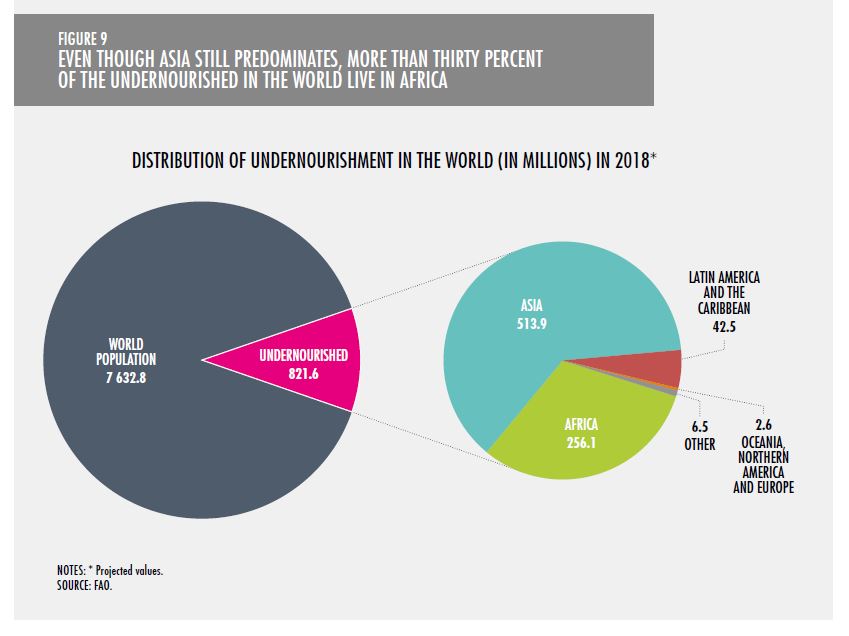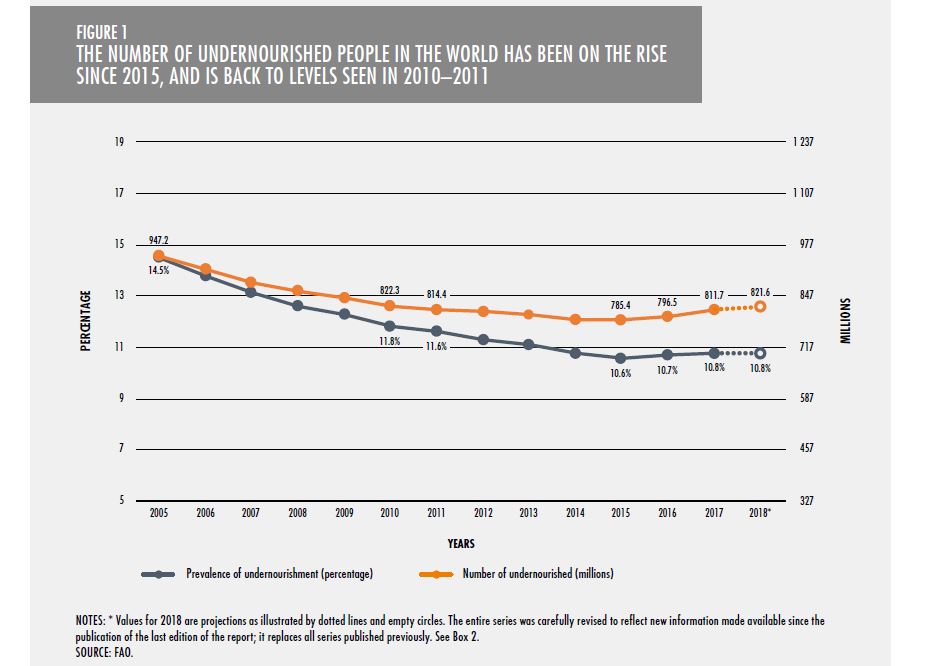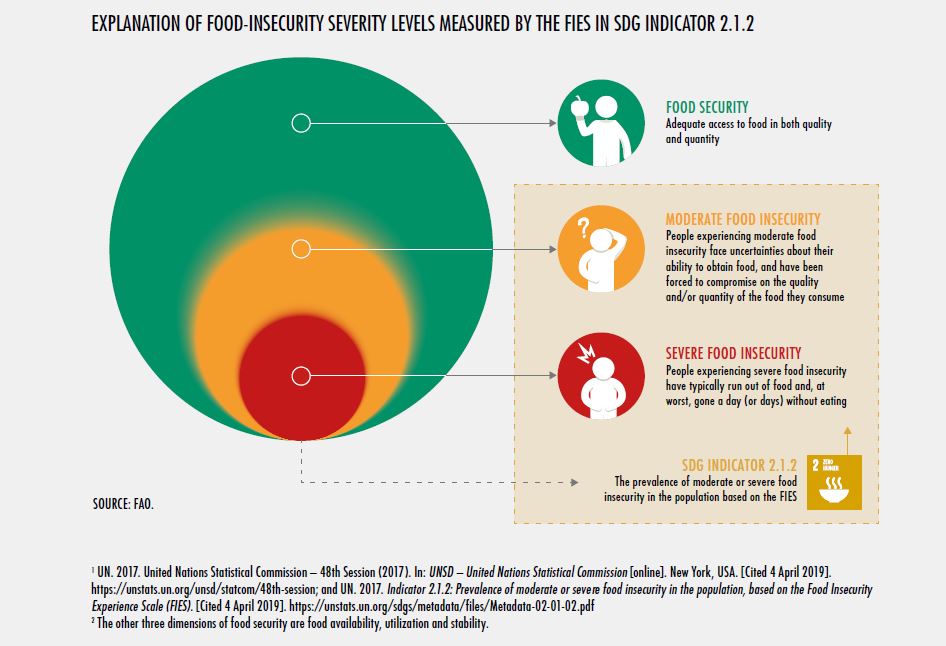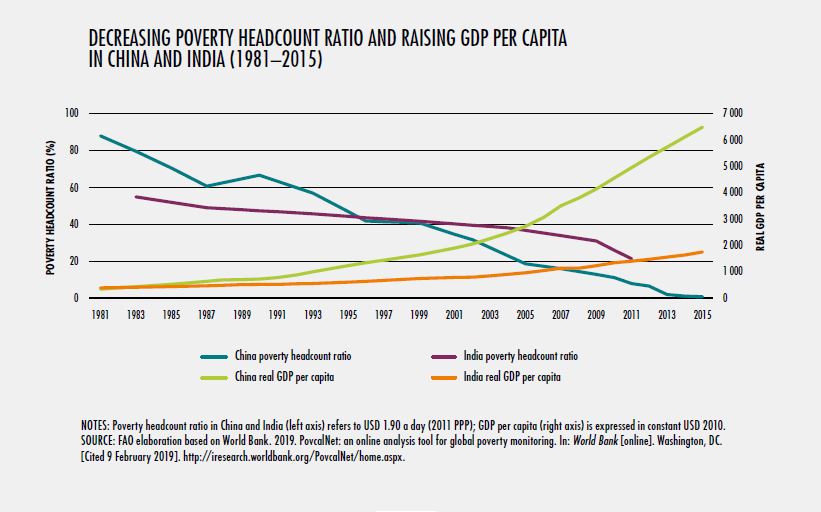One of the Sustainable Development Goals was to reduce Global Hunger to zero by 2030, but the latest UN report shows the world is going backwards and that goal may not be so easy to reach

Last week, alongside the High-level Political Forum (HLPF) which monitors the progress on the global Sustainable Development Goals, UN agencies released the third edition of the State of Food Security and Nutrition in the World report. Prepared and signed by the top leadership of the UN Food and Agriculture Organization (FAO), the International Fund for Agricultural Development (IFAD), the UN Children’s Fund (UNICEF), the World Food Programme (WFP) and the World Health Organization (WHO), the report makes disturbing reading.

The world was already aware that global hunger was rising, but the 2019 report makes it clear that this is a complicated crisis. While the 2018 report had emphasised how climate change was one of the major drivers of the crisis, this year’s report looks closely at conflict, inequality, and linkages to global economic structures as an explanation of why the number of people going hungry – though not the proportion – has continued to rise since 2015. This wider view is enabled by a new measure – the number of people suffering from moderate to severe food insecurity, where moderate insecurity is defined as those unsure of regular access to food, and compromising on quality or quantity, and severe being those who have had to do without food for some length of time. These two categories cover 17.2% of the global population, or over 1 billion people.

This was even more striking when it came to the prevalence of undernutrition (PoU). “Regarding hunger and malnutrition, the PoU decreased from 15.9% in 2002–2004 to 8.8% in 2015–2017 in China, compared with a decrease from 22.2% in 2002–2004 to 14.8% in 2015–2017 in India. Stunting in children under five years of age fell from 17.8% in 2000 to 8.1% in 2013 in China. In India, it fell from 54.2% to 38.4% between 2000 and 2015, which is still a high prevalence, compared with a global average of 23.2% in 2015,” the report notes.

These insights are important not just for India, but for South Asia as a whole, where agriculture is the mainstay for the largest part of the workforce, and current development patterns seek to emulate China’s high growth strategy. While China’s development path seems to have worked for it due to a combination of factors – lower initial inequality and higher social development indicators in health and education – this may not translate to as much success in poverty and hunger reduction in South Asia if these issues are not taken care of. In fact, to a large degree, South Asian countries have ignored the issue of farmers, leaving them even more vulnerable in case of negative economic surprises, like the 2008 global financial crisis. “In the Indian Himalayas, economic slowdown coupled with natural resource depletion and climate change negatively impacted on food production and employment opportunities. This resulted in increased threats to food security due to lower purchasing power.”
This situation is likely to be further exacerbated as climate change impacts degrade land, and lower the ability to produce crop, as a recently leaked draft of a forthcoming report by the IPCC suggests.
Nevertheless the South Asian story remains one of relative progress, while in West Asia it is one of regression. Within the Western Asian subregion, the difference is striking between countries that have been affected by popular uprisings in Arab states and other conflicts, and those that have not been affected. For those affected countries, There is an increase in the PoU from the already high value of 17.8%, to 27.0%, “almost doubling the number of undernourished between 2010 and 2018. The PoU did not change during the same period in the other countries in the region.” (emphasis added)
While this highlights how devastating conflict can be in driving food insecurity, it fails to mention that food insecurity has been one of the drivers of this conflict as well, with Syria, Egypt and Tunisia all facing either drought or experiencing “bread riots” before the uprisings. In this, the report seems to fail to make the connection between existing inequality, food insecurity, and discontent leading to greater food insecurity due to the violence this has unleashed.
The report will have been a sobering read to the UN, but it should be mandatory reading for governments in South Asia struggling with rising discontent and increasing inequality, who seem set on development paths that may only increase these problems.
Article Credit: thethirdpole
